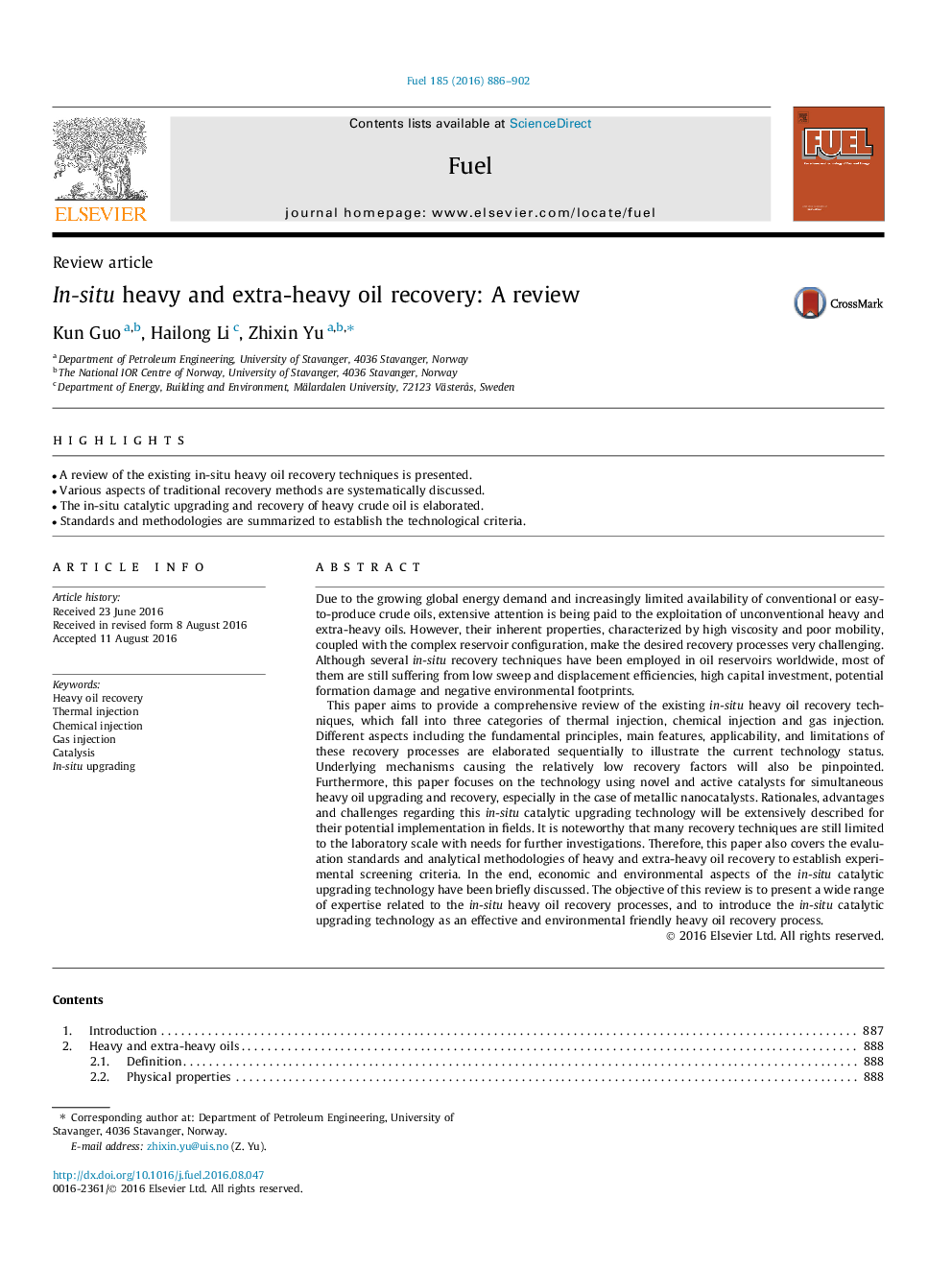| Article ID | Journal | Published Year | Pages | File Type |
|---|---|---|---|---|
| 6632728 | Fuel | 2016 | 17 Pages |
Abstract
This paper aims to provide a comprehensive review of the existing in-situ heavy oil recovery techniques, which fall into three categories of thermal injection, chemical injection and gas injection. Different aspects including the fundamental principles, main features, applicability, and limitations of these recovery processes are elaborated sequentially to illustrate the current technology status. Underlying mechanisms causing the relatively low recovery factors will also be pinpointed. Furthermore, this paper focuses on the technology using novel and active catalysts for simultaneous heavy oil upgrading and recovery, especially in the case of metallic nanocatalysts. Rationales, advantages and challenges regarding this in-situ catalytic upgrading technology will be extensively described for their potential implementation in fields. It is noteworthy that many recovery techniques are still limited to the laboratory scale with needs for further investigations. Therefore, this paper also covers the evaluation standards and analytical methodologies of heavy and extra-heavy oil recovery to establish experimental screening criteria. In the end, economic and environmental aspects of the in-situ catalytic upgrading technology have been briefly discussed. The objective of this review is to present a wide range of expertise related to the in-situ heavy oil recovery processes, and to introduce the in-situ catalytic upgrading technology as an effective and environmental friendly heavy oil recovery process.
Keywords
Related Topics
Physical Sciences and Engineering
Chemical Engineering
Chemical Engineering (General)
Authors
Kun Guo, Hailong Li, Zhixin Yu,
